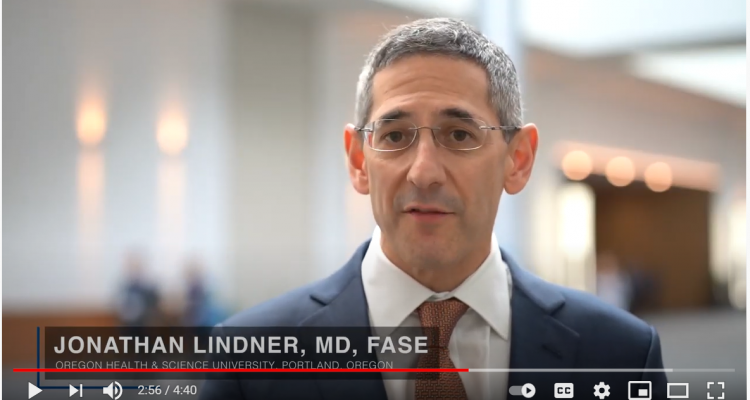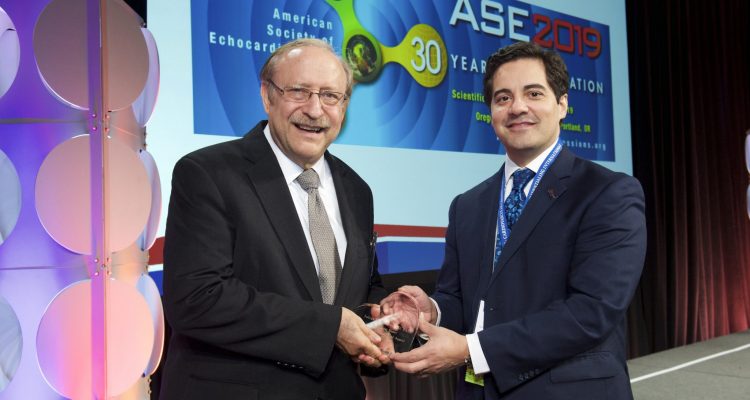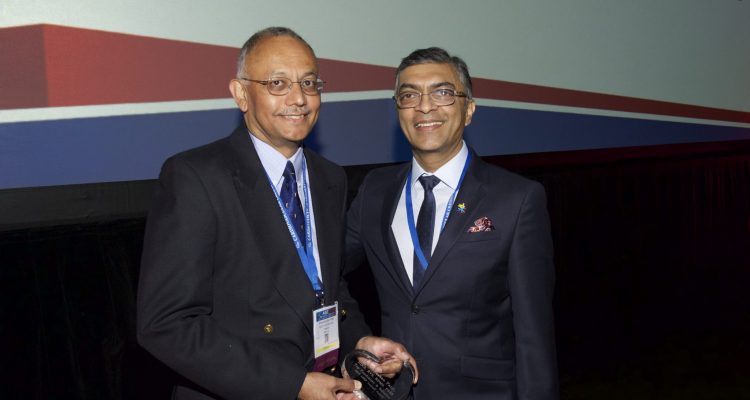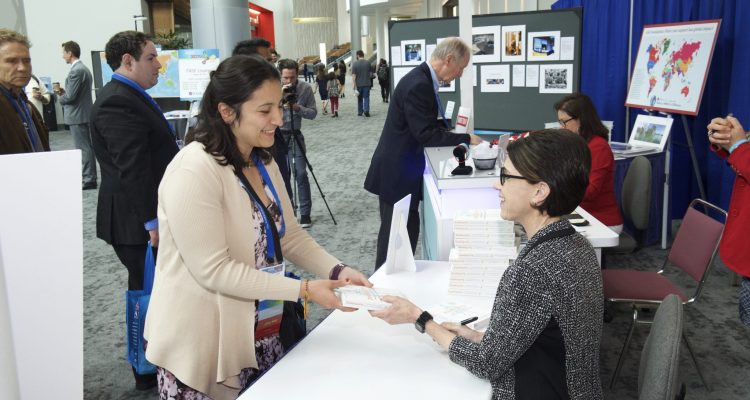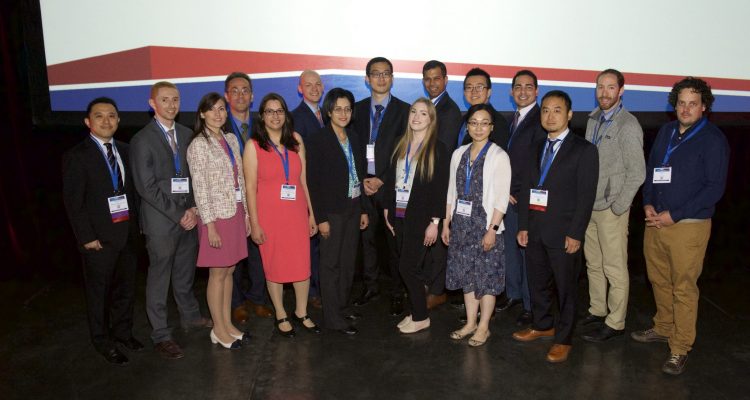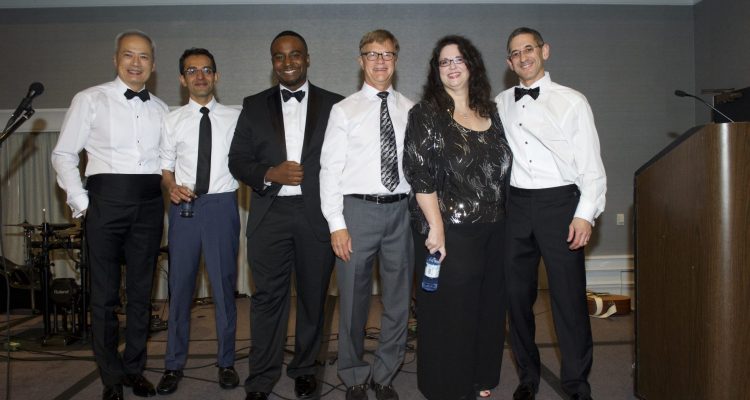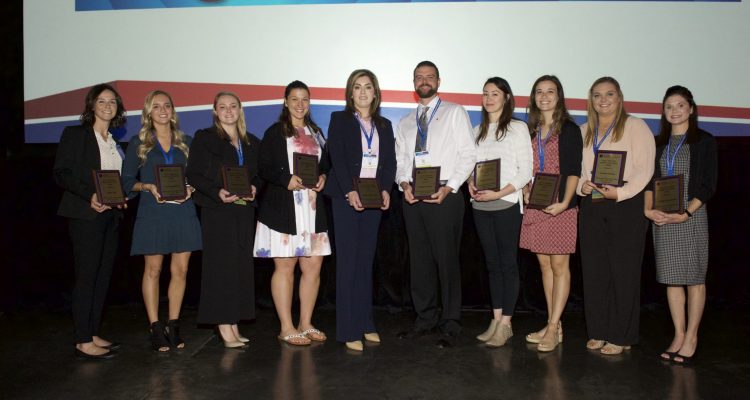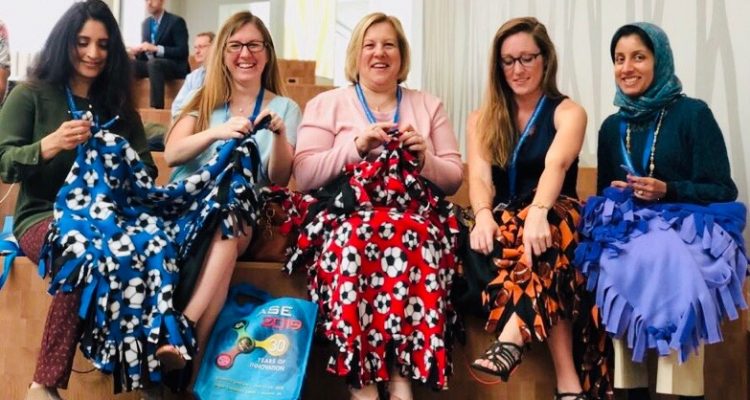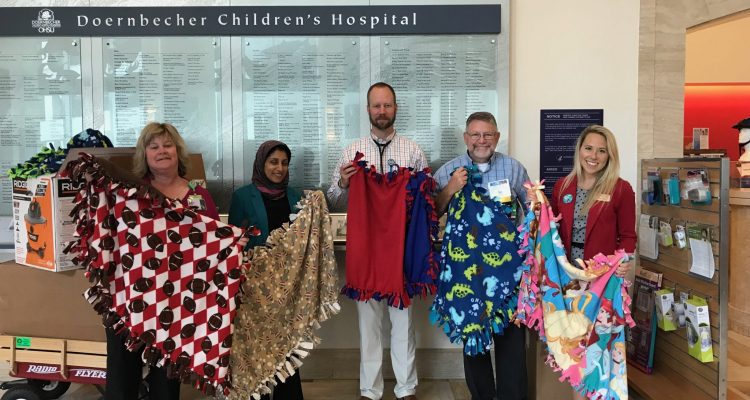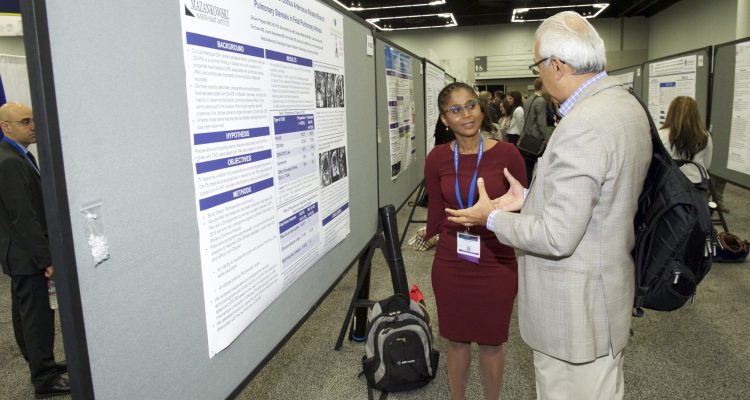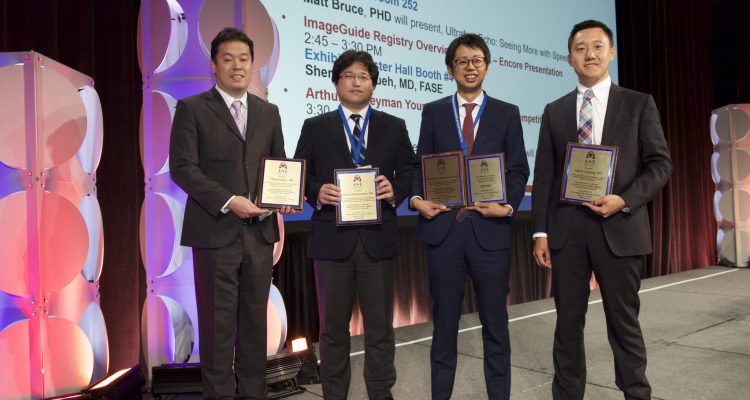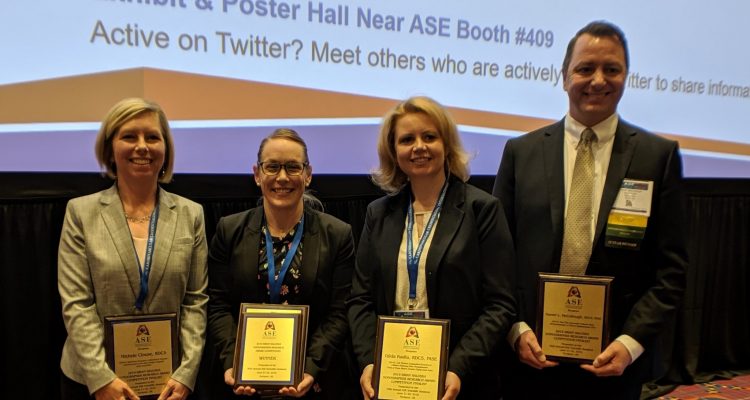The application period for 2023 is now closed.
Funding opportunity description/purpose:
The aim of this grant funding opportunity is to examine the impact of embedded echocardiography report interventions on referral patterns and outcomes in patients newly diagnosed by echocardiography with severe valvular heart disease. This study will focus on aortic stenosis but could be applied to other forms of severe valve disease that would benefit from appropriate referral to specialized care, whether to a cardiologist, multi-disciplinary heart team, or valve clinic, to undergo further treatment or intervention. The opportunity will assess the impact of an intervention aimed at driving changes in referral patterns through a guideline-based recommendation within the echocardiography report for patients presenting with echocardiographic evidence of severe valvular heart disease.
The presence of severe valvular heart disease (VHD) in patients may affect their risk of stroke and mortality. Considering the growth in numbers of patients presenting with VHD, ASE is concerned that the diagnosis, referral and treatment for these patients needs to be optimized to lower overall health care costs and increase positive patient outcomes. Current data depict that many VHD patients may have delayed or incomplete care because their diagnosis from a cardiovascular ultrasound examination requires additional clinical support through appropriate referral to a specialist. It has been estimated that while the majority of cardiovascular ultrasounds are initiated by primary care physicians, many patients were not referred to a specialist following the diagnosis of severe valvular disease. Without referral to a cardiac specialist, patients may be at higher risk for adverse events, including additional intervention and a greater possibility of mortality. This research project will seek to 1) examine the gaps in care following cardiac ultrasound in patients with findings of severe aortic stenosis, including potential referral gaps, and 2) study the impact of a guideline-based intervention embedded within an echocardiogram report to drive any needed changes in referral patterns with subsequent examination of impact on patient care and clinical outcomes.
Purpose and Description of Program
One grant will be awarded by ASE through its Foundation, with the support of funding from Edwards Lifesciences. This research award will utilize a two-fold approach with a pre/post single arm study with a historic control aimed at testing a specific intervention’s impact on the care or management of patients with severe aortic stenosis referred by a non-cardiologist for an echocardiogram.
Retrospective Study
Historical analysis will focus on data collection across at least three (3) but no more than five (5) institutional databases with a follow-up period defined as 1-365 days after an echocardiogram with a diagnosis of severe valvular disease, with the first analytical priority being given to severe aortic stenosis, which is usually managed in a standardized manner. Additional assessment of other forms of severe valve disease (severe aortic regurgitation and stenosis or regurgitation of the mitral valve and tricuspid valve) is also encouraged. Specific attention will be directed to patients who have been seen by a non-cardiologist/cardiac surgeon such as Primary Care Physician, Internal Medicine Physician, or Nurse Practitioner. Patterns of subsequent referral by non-cardiologists are of interest, evidenced by a completed visit with a cardiologist, interventional cardiologist, or cardiac surgeon (either individually or as part of a multi-disciplinary heart team or valve clinic). Time-to-follow up will be used to calculate the referral rates through 90-days and 1-year. Subsequent clinical intervention (if appropriate) within the year following the date of diagnosis via echocardiogram will also be collected to examine the association of timely referral with treatment rates/timing.
Prospective Study
An intervention of an embedded guideline-based recommendation within the echocardiography report should be developed to ensure any appropriate referral to a cardiologist/specialist is clearly articulated within the report itself. Exact phrasing of this guideline-based recommendation can be determined by the Principal Investigator of this grant, so long as the recommendation is embedded within the echo report. The efficacy of this intervention will then be examined through a prospective analysis, which will determine the extent to which the intervention led to more timely treatment of patients with severe aortic stenosis. For the purposes of this study, the patient follow-up length should be a minimum of 1-year from the date of echo diagnosis. The study endpoints for the prospective study should mimic those of the retrospective study and should be at a minimum the rates of a cardiologist visit, aortic valve replacement (i.e., TAVR or SAVR) within 90 days (primary endpoint) and one year (secondary endpoint), but additional cardiovascular outcomes can be included. Additional grant support may be available for the examination of other severe valve disease upon satisfactory completion of the research objectives outlined in this RFA.
Key concepts for the award are that the funding period should be two (2) years in duration, and the PI of the grant must be a member of the ASE. The prospective study duration is anticipated to be approximately 24 months, 12 months allocated for patient recruitment and 12 months patient follow-up. Shorter enrollment periods are acceptable if powered appropriately. It is expected that this will involve a multicenter collaborative research design with main PI and multiple co-investigators. The study will include multiple research centers and consider a population approach to be representative of the state of issues nationally (to be representative of real-life applications).
Areas of Research Interest
Retrospective/Historical Phase: The primary research objectives within the retrospective phase are to undertake a review of institutional databases focusing on severe valvular disease, specifically aortic stenosis, but collecting data where possible on severe mitral regurgitation or stenosis, severe aortic regurgitation, and severe tricuspid regurgitation for future analysis. Specific aims of this research phase include, but are not limited to, the following:
- Determine the clinical outcomes of patients with severe aortic stenosis described in an echocardiography report
- Subcategorize by whether the echocardiogram was ordered by a non-cardiologist
- Determine if there are differences in referral patterns for cardiac consultation within 90 days and 1-year according to the provider who requested the echocardiogram
- Determine if the referral patterns are associated with differences in patient care and clinical outcomes
Prospective Phase: The primary research objectives within the prospective phase are to examine the impact of a guideline-based intervention placed within the echocardiography report, especially for the benefit of non-cardiologists, and whether the intervention resulted in more timely treatment of patients with severe aortic stenosis and, where possible, to demonstrate the effect on patient care and clinical outcomes. Specifically, the intervention should include an embedded statement within the echocardiogram report to indicate the need to refer the patient to a cardiologist/specialist for further follow-up. The impact of the intervention should be assessed through comparisons of the findings from the retrospective review to demonstrate its efficacy.
Based on a pre/post, single arm design, it is anticipated that a minimum of three (3) institutions but no more than five (5) of the same institutions may participate in both the retrospective and prospective phases, the costs of such intervention, data collection and analysis to be supported by this grant.
Key dates:
- Application is closed
Funds available and anticipated number of grants:
One grant will be awarded by ASE through its Foundation, with the support of funding from Edwards Lifesciences. Amount of funds available:
- Principal Investigator/Research Personnel per year: $80,000
- Retrospective Data Collection per Clinical Institution: $56,500
- Statistical Consultant and Data Scientist per year: $75,000
- Intervention Development and Implementation per Clinical Institution: $100,000
Budget may change depending on the number of institutions for each arm of the study. The maximum funding amount for the project is $1.1 million. Milestone Payments will be contingent on project accomplishments including, but not limited to 1) completion of regulatory requirements for the retrospective and prospective studies, 2) completion of the retrospective portion of the study and 3) completion of the prospective portion of the study including submission to the Journal of the American Society of Echocardiography (JASE).
Grant funding period:
Eligibility requirements:
Eligible Applicants:
Eligible organizations for qualifying as a primary institution must be U.S.-based and may include any higher education institutions (colleges, universities, or health science centers), public/state-controlled institutions of higher education, or other U.S.-based nonprofit organizations (e.g. with 501(c)(3) IRS Status). Industry subcontracts are allowed but for-profit companies are disallowed from being the primary research institution. Applicant organizations may only submit one application per organization.
Principal Investigators (PIs) and Co-Investigators
Any individual(s) with the skills, knowledge, and resources necessary to carry out the proposed research as the PI or (co-PIs) is invited to apply for the Award. ASE members will be given priority should the merits of the grant be equal. Investigators from industry or a for-profit company can participate as a co-investigator but not as a PI or co-PI. A PI or co-PI may submit only one application.
Awardee Responsibilities
The PI will be responsible for ensuring that all regulatory requirements (i.e. IRB, internal institutional approvals) will be met prior to receiving funds. The awardees must also follow the guidelines for the Ethical Conduct of Research (see Award Administration and Reporting below). The PI or a delegate member of the investigational team must be willing to present the results of the research project to two major Scientific Sessions for ASE, one for the retrospective study and one for the prospective study. Funds ($1,200 per meeting) for travel will be provided beyond the budget limitations described below.
Application requirements:
Font, Page Formatting, and Figures
Conventional font types (Arial, Times New Roman, Helvetica, etc.) and a font size no smaller than 11-point should be used. Page margins should be no less than 0.5 in. Embedded figures should adhere to the page margins and should have descriptive figure legends. Figure legends can be smaller than 11-point but must be legible.
Proposals are to include the following elements –
Full Proposal
-
-
- Title Page – A title page must contain the following information:
- Descriptive title of the proposed activity
- Name(s), institution(s), address(es), and telephone number(s) of the PI(s)
- Names of other Key Personnel
- Proposed funding period
- Institutional signing authority and/or fiscal administrator
- Biosketches (limit 5 pages) – For all key personnel, an NIH-style biosketch (non-fellowship style) must be provided with content and page limits of no more than 5 pages based on the following NIH formatting and content recommendations: (https://grants.nih.gov/grants/forms/biosketch.htm
- Resources and Key Equipment (limit 1 page) – A description of resources and equipment that are key to the proposal should be provided. Do not list all resources available to the investigators, but instead limit the description to those resources that are immediately available and critical to the proposal. This section should include a description of laboratory space, computer resources, clinical research, core services, and equipment.
- Research Strategy (limit 6 pages) – The research strategy should address how the study will address understanding the gaps in diagnostic patterns. Proposals should include the following components (with suggested page lengths):
- Specific Aims (1/2 page)
- Background and Description of the Clinical Problem (1 page)
- Innovation (1/2 page)
- Scientific Methods (3-4 pages)
- Multicenter strategy (1/2 page)
- Consideration of potential problem areas/alternative tactics
- Intent/desire to gather more data outside of aortic stenosis
- Budget Justification for funding (1 page), explaining how the money from the ASE Foundation would be utilized:
- Principal Investigator: Responsible for research program, developing research aims, methodology, analyses, manuscript preparation and coordinating with co-investigators and clinical institutions
- Clinical Institution: Includes effort for Co-Investigator and research coordinator; responsible for data collection and transfer from clinical institution
- Statistical Consultant/Data Scientist: Perform statistical analyses and management of data from the institutions
- Intervention Development and Implementation: Includes costs related to technical development and implementation of the intervention
- Supporting Letters – Letters of support and collaboration are needed from all key personnel listed in the project confirming their role in the project. Up to five (5) additional letters of support are also encouraged from any other individuals who can speak to the attributes of the proposed work, team of investigators, research institution or institutional resources/leadership, etc.
- Title Page – A title page must contain the following information:
Application Review/Selection Criteria
An ASE Committee composed of valve disease experts with broad representation from the field of cardiovascular ultrasound will review the proposals and select an awardee based on a blinded ranking system. All applications will receive a full written critique. Grants will be assessed based on the Research Team’s demonstrated capability to include and test the proposed intervention, the scientific and technical merit of the proposed project as determined by scientific peer review, and relevance of the proposed project to program priorities. An Overall Impact score will be generated based on the scored review criteria below:
-
-
- Research Team’s track record of success and ability to test the intervention
- Potential impact on clinical care
- Appropriate recognition of criteria for and diagnosis of severe valve disease as demonstrated through retrospective data collection
- Examination of referral patterns following identification of significant aortic stenosis noted on echocardiography report
- Feasibility and utility of intervention in prospective analysis
- Connection to patient care data for retrospective and prospective analysis
- Scientific method/rigor
- Inclusion of diverse, minority and disadvantaged populations
-
In addition, reviewers will consider whether the budget and the requested period of support are fully justified and reasonable in relation to the proposed research.
FAQs
Application Requirements –
Q. Do I have to be an ASE member to be eligible?
A. No, any individual(s) with the skills, knowledge, and resources necessary to carry out the proposed research as the PI or (co-PIs) is invited to apply for the Award. ASE members will be given priority should the merits of the grant be equal.Q. Is the grant application really limited to only fourteen pages?
A. Yes, the full description of the proposed research and any figures/tables (not including supporting letters) should not exceed fourteen typewritten pages with one-inch margins using a minimum of an 11-point font.Q. To whom should my letters of support be addressed?
A. The letters should be addressed to the ASE Research Committee.Q. Is it okay to apply for ethics approval after submitting the proposal? Can the grant be awarded subject to ethics approval?
A. Grant applications do not need final approval from an institutional review board, human studies committee or animal care and use committee at the time of submission. If approval has not been granted prior to submission of the proposal, applicants should include a letter stating that appropriate institutional review board application is pending. Final institutional review board approval is required prior to release of ASE Foundation funds.Submission –
Q. Can I mail you my grant application?
A. No, only online applications submitted per submission instructions will be accepted. Paper or diskette submissions will not be considered.Use of ASE Foundation Funding –
Q. What if I relocate to a different institution? Can the grant funding be transferred?
A. No, the grant recipient must complete the project at the institution from which the application was submitted.Q. What do I do if there is money left over at the end of my project?
A. Any unexpended balance at the end of the grant’s funding period is due back to the ASE Foundation.Q. What if I don’t complete the project during its funding period? Can I apply for an extension?
A. It is the expectation of the ASE Foundation that the project will be completed during the time funding is allocated. However, it is recognized that there can be circumstances beyond the investigator’s control that hinder his/her ability to meet the timeline required by the grant. In these situations, it is possible to apply for a no-cost extension. Such a request would require a comprehensive progress report outlining what has been accomplished thus far, what needs to be/will be accomplished during an extension in order to finalize the project (including a timeline for completion), and a budgetary report delineating what remaining funds from the grant are still available. A no-cost extension request must be received prior to the end of the grant’s funding period. Requests received after the funding period has ended will not be considered.Results Reporting & Acknowledgement of Support –
Q. How do I report the results of my research to the ASE Foundation?
A. Accepting funding from the ASE Foundation constitutes a commitment by the grant recipient, his/her co-investigators, and the academic institution to:-
-
- Complete the project and produce meaningful results within both the designated time period and the budgeted funds provided.
- The PI is expected to provide a total of three (3) Progress Reports to ASE. The first Progress Report is a mid-year report to the ASE explaining the progress made and an updated anticipated completion date of the retrospective portion of the study. The second Progress Report to the ASE will be provided at the conclusion of the retrospective phase of the study describing the results and completed study objectives as well as the methodology and anticipated completion date of the prospective study. A significant portion of the prospective study section funding (will be released within thirty (30) days following completion of the retrospective section report and submission of the retrospective section paper to the Journal of the American Society of Echocardiography (JASE). The third and final Progress Report to ASE should be made within sixty (60) days of completion of the prospective study arm. The contents of the Progress Reports will be provided at the time of funding notification. The PI will be responsible for the submission of all Progress Reports. Acceptance of grant funding will include written confirmation that the PI or a delegate member of the investigational team will submit at least two (2) papers including the results of the retrospective (1 paper) and prospective section (1 paper) of the research project to the Journal of the American Society of Echocardiography (JASE). This written confirmation should include a proposed timeframe for manuscript submission at the conclusion of each portion of the study.
- Return any unexpended balance of the grant funding at the end of the funding period.
- Include acknowledgement of this funding in all future publications, press releases, other documents, and presentations that cite results from this project.
-
A template for the required reports will be provided.
Q. How do I acknowledge ASE Foundation grant support?
A. Each publication, press release or other document and/or presentation that cites results from ASE-supported research must include an acknowledgement of ASE Foundation grant support and disclaimer, such as, “The project described was supported by Grant Number ____ from the ASE Foundation with funding from Edwards Lifesciences. The content is solely the responsibility of the authors and does not necessarily represent the official views of the American Society of Echocardiography or the ASE Foundation.”FAQ’s from Potential Applicants
Q. Is there an allowable indirect rate?
A. Indirect costs are included in the $1.1 million budget. There is no set indirect rate. Application budgets should be appropriate for the scope of work proposed; indirect costs are optional but should be within research norms and applied to total costs.Q. Is the $1.1 million budget the total amount to fund all projects (retrospective and prospective)?
A. YesQ. How should the PI and other personnel compensations be spread out for two periods?
A. It’s up to you to decide how the personnel compensations will be spread out, it must stay within budget and include this in your budget justification.Q. Do the funding limits for the PI and other personnel cover salaries and benefits or just salaries? Is there a cap amount to pay for benefits?
A. The funding limits just cover salaries. There is no cap to pay for benefits, just make sure to include this in your budget justification.Q. Is there a cap on the amount you can spend on equipment and supplies?
A. No, there is no cap on funds to purchase equipment and supplies as long as this is justified and within the budget limits.Q. If we partner with other organizations, do we need to have an agreement to explain the distribution of funds and to cover any HIPAA requirements concerning the exchange of patient information?
A. Within the parameters of the RFA, it is up to the applicant as to how much documentation they provide about the nature of the partnership and how the funds are distributed within the partnership.Q. Can institutions outside of the US be part of the grant if the lead institution is US based?
A. While the Primary Institution needs to be US based, the secondary clinical sites do not need to be. -
- Q. Is it possible for an investigator to be listed on 2 separate applications? I.e. one as the PI and one as a participating site?
A. If an investigator is a PI on one application and a co-investigator on another application, these applications may be considered to be duplicate applications.
Q. ### HealthCare is made up of ## hospitals and several physician groups. Would an application using data from these different sites fulfill the ASE requirement that this be a multicenter program?
A. The RFA mentioned institutions. Therefore ## HealthCare would be considered as one institution.
Q. Strictly speaking, a pre-post design is not the best way to evaluate this question scientifically. Would an alternate approach be acceptable?
A. The RFA clearly defined the expected study design and applications will need to adhere to those guidelines.
Q. Do the same institution need to be in both the retrospective and prospective studies?
A. YesQ: Does the proposal have to address AS or can it be written around any of the valve interventions?A: The first priority should be given to AS but inclusion of other valve lesions is encouraged. So the proposal will need to include AS at a minimum.
Q: The RFA allows the institution to use an appropriate IDC rate (i.e. there is no set min/max from ASE). It also mentions that IDC should be total cost. Does this mean that the prime institution can charge IDC on subcontract expenses (even when the subs are charging IDC on their own directs)? Or should this be treated more like AHA where the prime cannot charge IDC against subcontract expenses?A: We would leave it to the applicant to allocate IDC rate as well as how they are distributed with the collaborating institutions.
Q: The RFA asks for the face page to have the name of an institutional official. Do you need an institutional signature at this point or just the name?
A: Just the name would be sufficient.
Q: When looking at the page limit for the biosketches, it says there is a five-page limit. Is this five pages per biosketch or five pages total for all biosketches?
A: It would be five pages per biosketch. Q: Budget Clarification – for the implementation, the additional sites will need clinical research coordinator/fellow/analyst salaries so would we write them into the implementation part?
A: Yes, that is correct.
- Award Termination: The funding source reserves the right to terminate grant support and request the return of unused funds for any violations of the NIH Principles for Ethical Research (https://www.nih.gov/health-information/nih-clinical-research-trials-you/guiding-principles-ethical-research). These principles include scientific validity, informed consent, fair subject selection, and human and data safety measures.
Contact Information
For application inquiries and assistance, please contact:
Rana Sharaf
Research Manager
American Society of Echocardiography
Email: RSharaf@ASEcho.org

